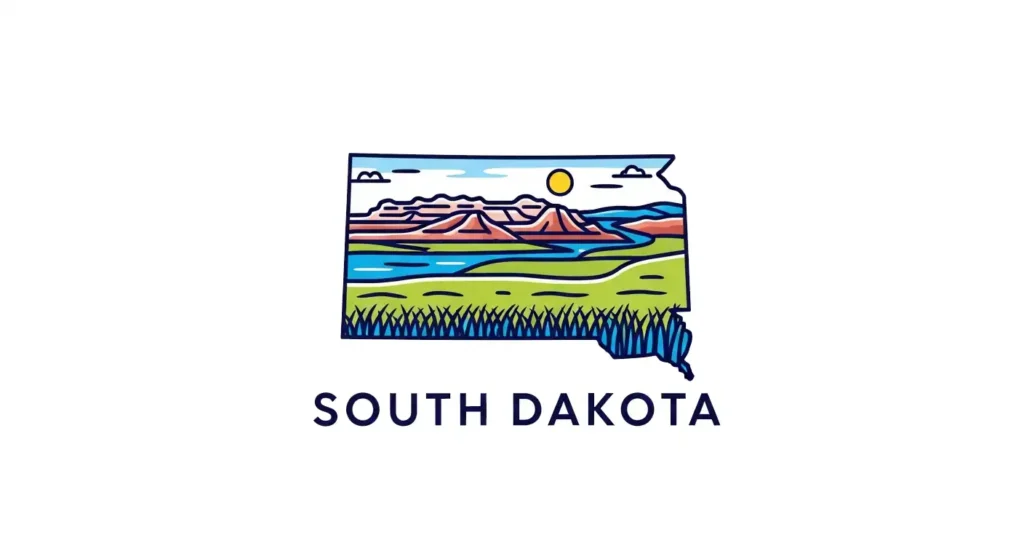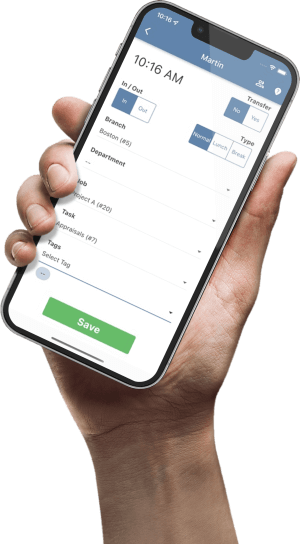Free South Dakota Payroll Tax Calculator

South Dakota Payroll Tax Calculator (Step-by-Step)
Understanding your South Dakota paycheck is straightforward. Our South Dakota Payroll Tax Calculator simplifies the process of estimating your take-home pay. Follow these easy steps to get an accurate estimate of your net pay.
Step 1: Enter Your Personal Information
- Country: Ensure “United States” is selected. (This is pre-filled.)
- Province/State: Choose “South Dakota” from the dropdown menu. (This is pre-filled.)
- Federal Filing Status: Select your current federal filing status (e.g., Single, Married Filing Jointly, Head of Household) from the dropdown. This determines your federal tax withholding rate.
- Federal Allowances: Enter the number of federal allowances you are claiming from your Form W-4. This number is used to calculate the amount of federal income tax to withhold from your paycheck.
Step 2: Input Your Pay Information
- Gross Wage / Pay Period: Enter your total earnings before any deductions for a single pay period. This is your gross pay.
- Annual Pay Periods: Select how often you are paid (e.g., Weekly, Bi-Weekly, Monthly) from the dropdown menu. This is essential for accurate annual calculations.
- Pay Date: Select the date you will be paid using the calendar tool. This is for your reference and does not affect the tax calculations.
Step 3: Review Your Estimated Net Pay
- After entering your information, the calculator will provide an estimate of your net pay (take-home pay) after federal taxes and FICA contributions.
- If you need to make changes, simply adjust the input fields and the calculation will update automatically.
Important Notes on Payroll in South Dakota:
No State Income Tax: South Dakota is one of the few states that does not have a personal income tax. Therefore, you will not see any state income tax withheld from your paycheck. There is no state-level equivalent of the federal Form W-4 for employees to complete.
Federal Income Tax: This is the tax withheld by your employer for the federal government, based on the information you provided on your Form W-4.
FICA Taxes: This consists of two separate federal taxes:
- Social Security: A percentage of your gross pay is withheld for Social Security, up to an annual wage limit.
- Medicare: A percentage of your gross pay is withheld for Medicare, with no wage limit.
Reemployment Assistance Tax: South Dakota has a Reemployment Assistance (unemployment insurance) tax. This tax is paid by your employer and is not deducted from your paycheck. Therefore, it does not affect your net pay calculation.
Other Deductions: This calculator provides an estimate based on statutory deductions. Your actual net pay may be different if you have additional voluntary deductions such as health insurance premiums, retirement plan contributions (like a 401(k)), or other pre-tax benefits.
Found our Free South Dakota Payroll Tax Calculator useful? Bookmark and share it.
South Dakota Payroll Tax for Small Businesses (2025)
For small businesses, South Dakota's payroll tax system appears deceptively simple. The state's famous lack of an individual or corporate income tax is a significant advantage, streamlining compliance and reducing the direct tax burden. However, this headline benefit doesn't tell the whole story. To truly understand labor costs, employers must navigate the state's sole payroll tax—the highly variable Reemployment Assistance (RA) tax, also known as State Unemployment Insurance (SUI)—and understand how federal taxes fit into the picture.
This comprehensive guide breaks down the essential components of South Dakota payroll taxes for 2025, offering a clear roadmap for compliance, cost management, and strategic planning.
The Foundation: Federal Payroll Tax Obligations in 2025
While South Dakota offers state-level simplicity, all employers are subject to a standard set of federal payroll taxes. These are non-negotiable labor costs and form the baseline for your payroll budget. The absence of a state income tax does not change your federal responsibilities.
Federal Insurance Contributions Act (FICA)
FICA is a mandatory federal tax composed of two parts that fund Social Security and Medicare.
- Social Security: For 2025, both the employer and employee contribute 6.2% of wages up to the annual wage base. This base has increased to $176,100 for 2025. The maximum Social Security tax per employee is $10,918.20, which the employer must match.
- Medicare: Both employer and employee contribute 1.45% of all employee wages. Unlike Social Security, there is no wage limit for the Medicare tax.
- Additional Medicare Tax: An extra 0.9% tax is withheld from employee wages exceeding $200,000 (for single filers). This is an employee-only tax; there is no employer match.
Federal Unemployment Tax Act (FUTA)
FUTA is an employer-only tax that funds federal oversight of state unemployment programs. The nominal rate is 6.0% on the first $7,000 of each employee's wages. However, employers in states with healthy, compliant unemployment systems, like South Dakota, receive a massive 5.4% credit. This effectively reduces the FUTA rate to 0.6%, or a maximum of $42 per employee per year. This credit is a significant, often overlooked, advantage for South Dakota businesses.
Key Takeaway:
Federal taxes are a fixed cost base. Your biggest opportunity to control payroll tax costs in South Dakota lies in managing your variable state-level tax.
| Tax Type | Employer Rate | Employee Rate | 2025 Wage Base Limit | Maximum Annual Tax (per Employee) |
|---|---|---|---|---|
| FICA - Social Security | 6.2% | 6.2% | $176,100 | $10,918.20 (each) |
| FICA - Medicare | 1.45% | 1.45% | None | No Limit |
| Additional Medicare Tax | 0% (No match) | 0.9% | On wages >$200k | No Limit |
| FUTA (with full credit) | 0.6% | 0% | $7,000 | $42 |
The South Dakota Anomaly: State-Level Payroll Taxes
South Dakota's payroll tax system is unique because of what it lacks. This intentional design fosters a pro-business climate but requires a sharp focus on the one tax that does exist.
The Cornerstone of Policy: No State Income Tax
South Dakota is one of the few states with no personal or corporate income tax. For payroll, this means:
- No need to register for state income tax withholding.
- No withholding of state income tax from employee paychecks.
- No filing of state income tax returns for the business or for employees who live and work in the state.
The Sole State Payroll Tax: Reemployment Assistance (SUI)
The only state-level payroll tax is the employer-paid Reemployment Assistance (RA) tax, or SUI. This funds unemployment benefits for eligible workers. The amount you pay is determined by your wage base and your specific tax rate.
2025 SUI Tax Parameters
- Taxable Wage Base: For 2025, the SUI tax applies only to the first $15,000 an employee earns during the year.
- New Employer Rates: Businesses with less than three years of history are assigned a standard rate.
- Non-Construction: 1.75% (1.20% contribution + 0.55% investment fee)
- Construction: 6.55% (6.00% contribution + 0.55% investment fee)
- Experienced Employer Rates: After three years, your rate is based on your "experience rating." It can range from 0% to over 9%, based on your history of unemployment claims.
| Parameter | Details for 2025 |
|---|---|
| Taxable Wage Base | First $15,000 per employee |
| New Employer Rate (Non-Construction) | 1.75% |
| New Employer Rate (Construction) | 6.55% |
| Experienced Employer Rate Range | 0.0% to 9.35%+ |
| Investment Fee | 0.55% (New) / 0.0% - 0.53% (Experienced) |
| Administrative Fee | Varies, potential increase to 0.08% in 2025 |
The Engine of SUI Rates: The Experience Rating System
The experience rating is the heart of the SUI system. It's a formula that links your tax rate directly to your history of layoffs. The state calculates a "reserve ratio" for your business by comparing the SUI taxes you've paid in against the unemployment benefits charged to your account. A high reserve ratio (few claims) leads to a very low tax rate, potentially 0%. A low or negative ratio (many claims) results in a much higher rate. This system gives you, the employer, direct control over a significant payroll cost.
The Broader Tax Landscape: Context for Business Decisions
Payroll taxes are just one piece of the puzzle. Understanding South Dakota's full tax structure is vital for accurate financial planning.
The "Three-Legged Stool" of Revenue
Without an income tax, South Dakota relies on sales taxes, property taxes, and federal funding. For businesses, this means:
- Sales Tax: The state rate is a temporarily reduced 4.2% (through mid-2027), but the tax applies to a broad base of goods and services.
- Property Tax: While a primary source for local funding, South Dakota offers a major advantage by not taxing business inventory or tangible personal property.
- Overall Burden: Thanks to this structure, the Tax Foundation consistently ranks South Dakota as one of the best states for business. For 2025, it ranked #2 overall in the nation.
Comparative Analysis: South Dakota vs. Neighboring States
When compared to its neighbors, South Dakota's strategic advantages become clear. The region is split between low-tax states in the west and traditional income-tax states in the east.
South Dakota's SUI system is competitively positioned. Its $15,000 wage base is moderate, offering a significant advantage over states like North Dakota and Montana, where taxes are due on a much larger portion of an employee's salary. This means for many businesses, the total SUI tax bill per employee can be lower in South Dakota, even if the initial rate isn't the absolute lowest in the region.
| State | 2025 SUI Wage Base | New Employer Rate (General) | Min/Max Experienced Rate |
|---|---|---|---|
| South Dakota | $15,000 | 1.75% | 0% - 9.35%+ |
| Wyoming | $32,400 | Varies by industry | 0% - 8.5% |
| Montana | $45,100 | Varies by industry | 0% - 6.12% |
| North Dakota | $45,100 | 1.03% | 0.08% - 9.76% |
| Nebraska | $9,000 ($24,000 if high-cost) | 1.25% | 0% - 5.4% |
| Minnesota | $43,000 | Varies by industry | 0.1% - 9.0% |
| Iowa | $39,700 | 1.0% | 0% - 7.5% |
Long-Term Outlook: Fiscal Stability Beyond 2025
A business-friendly tax climate requires a healthy state government. South Dakota's long history of fiscal prudence provides a stable foundation for the future.
A Key Competitive Advantage: UI Trust Fund Solvency
Following the pandemic, many states depleted their unemployment insurance (UI) trust funds and took large federal loans. Businesses in those states now face rising federal FUTA taxes to repay that debt. South Dakota is a powerful exception.
- Fully Solvent: South Dakota's UI Trust Fund is fully funded with a balance of over $200 million.
- No Federal Debt: The state has no outstanding federal loans for its UI program.
- No FUTA Credit Reductions: This solvency protects South Dakota employers from the automatic FUTA tax hikes that businesses in many other states are now paying. This is a significant, long-term cost advantage.
Strategic Recommendations for South Dakota Employers
Use this knowledge to build a smart payroll strategy that ensures compliance and controls costs.
Compliance and Registration Checklist
Ensure you are properly registered with all required agencies:
- Federal EIN: Obtain your Employer Identification Number from the IRS.
- EFTPS: Register with the Electronic Federal Tax Payment System to remit federal taxes.
- SD Dept. of Labor & Regulation (DLR): Register to set up your Reemployment Assistance (SUI) account.
- SD Dept. of Revenue (DOR): Register for a sales tax license if you sell taxable goods or services.
- New Hire Reporting: Report all new employees to the DLR's New Hire Reporting Center within 20 days.
Proactive Cost Management: Controlling Your SUI Tax Rate
The single most effective way to lower your payroll tax burden in South Dakota is to manage your SUI experience rating.
- Stabilize Your Workforce: Implement strong retention strategies. Low turnover is directly rewarded with lower SUI tax rates.
- Manage Claims Diligently: Respond to all DLR requests promptly. Keep meticulous documentation for all employee separations, especially terminations for cause.
- Contest Improper Claims: Challenge claims you believe are without merit. Strong documentation is your best defense against improper benefit payments.
Did you know?
South Dakota allows employers to make voluntary contributions to their SUI account. A small extra payment at year-end could boost your reserve ratio enough to qualify for a lower tax bracket in the following year, saving you more than the cost of the contribution.
Appendix: Key State Agency Contacts
| Agency | Primary Function for Payroll | Website |
|---|---|---|
| South Dakota Department of Revenue (DOR) | Sales Tax, Business Tax Registration | dor.sd.gov |
| South Dakota Dept. of Labor & Regulation (DLR) | Reemployment Assistance (SUI) Tax, New Hire Reporting | dlr.sd.gov/ra |
Simplify Your South Dakota Payroll
Navigating payroll taxes, even in a business-friendly state like South Dakota, can be complex. TimeTrex Payroll services can automate your federal and state tax calculations, payments, and filings, ensuring compliance and giving you more time to focus on growing your business.
Learn More About TimeTrex PayrollOther Payroll Tax Calculators
Loading other available calculators...
Disclaimer: The content provided on this webpage is for informational purposes only and is not intended to be a substitute for professional advice. While we strive to ensure the accuracy and timeliness of the information presented here, the details may change over time or vary in different jurisdictions. Therefore, we do not guarantee the completeness, reliability, or absolute accuracy of this information. The information on this page should not be used as a basis for making legal, financial, or any other key decisions. We strongly advise consulting with a qualified professional or expert in the relevant field for specific advice, guidance, or services. By using this webpage, you acknowledge that the information is offered “as is” and that we are not liable for any errors, omissions, or inaccuracies in the content, nor for any actions taken based on the information provided. We shall not be held liable for any direct, indirect, incidental, consequential, or punitive damages arising out of your access to, use of, or reliance on any content on this page.
Trusted By
Trusted by 3.2M+ Employees: 21 Years of Service Across Startups to Fortune 500 Enterprises
Join our ever-growing community of satisfied customers today and experience the unparalleled benefits of TimeTrex.










Strength In Numbers
Join The Companies Already Benefiting From TimeTrex
Time To Clock-In
Start your 30-day free trial!
Experience the Ultimate Workforce Solution and Revolutionize Your Business Today
- Eliminate Errors
- Simple & Easy To Use
- Real-time Reporting

Saving businesses time and money through better workforce management since 2003.
Copyright © 2025 TimeTrex. All Rights Reserved.
